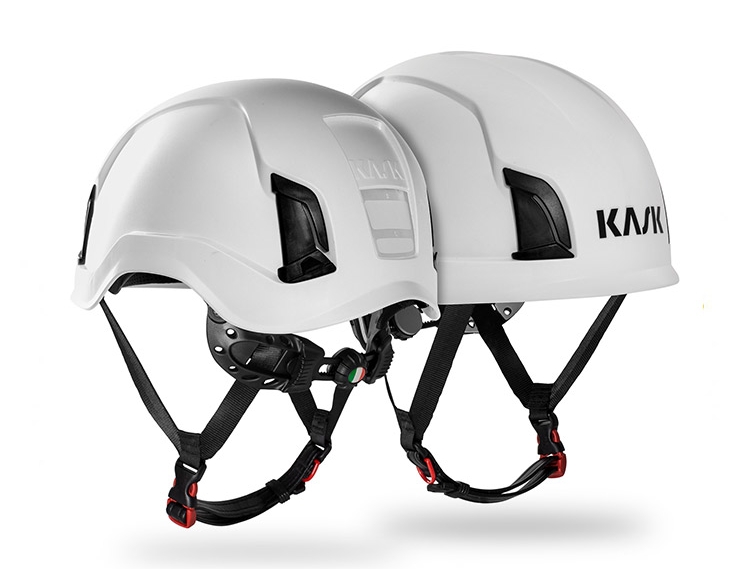
KASK Zenith Safety Helmet
For decades, hard hats have been synonymous with construction job site safety. Their one major flaw, however, is that if workers fall, the hard hat rarely stays on their head, exposing them to possible head injuries resulting from the fall. According to Bloomberg News, the National Institute for Occupational Safety and Health (NIOSH) launched research campaign to determine their effectiveness in protecting against head and neck injuries. Their findings have not yet been released, but companies have begun to seek out new products, in hopes of reducing injuries.
Improving upon head protection is a benefit to many different parties surrounding the industry. The worker benefits from less chance of injury, the company benefits from less lost time and worker’s compensation payouts, and insurance companies benefit from lower risk and less claims. So far, attention has turned to safety helmets, like the ones search and rescue teams and mountaineers wear with chin straps, as the best current alternatives to hard hats. Contractors across the pond have also recently begun testing safety helmets on their job sites, with generally positive feedback.
In the US, large contractors like Skanska, Clark Construction, and Balfour Beatty have launched test programs involving safety helmets on job sites. According to Bloomberg, the KASK Zenith safety helmet ($140 on Amazon) is being tested by at least a couple of the companies.
In addition to being strapped to a worker’s head, safety helmets boast some other major benefits, chief of which is the ability to functionally accessorize. For example, many of the helmets are Hi-Viz, are shaped to allow for over the ear hearing protection, and have multiple options for safety visors of various sizes. Their major drawback, especially for smaller contractors, is their initial price. A standard hard hat typically runs $15 to $20, but a safety helmet can fetch anywhere from $100-$150. Additional accessories only add to a higher cost. The KASK helmets do have a shelf life of 10 years, whereas standard hard hats typically have a 5 year shelf life.
If your company is considering switching to these helmets, it’s important to remember that protective head gear must meet ANSI Z89.1 standards. Only certain safety helmet manufacturers meet these standards.
Full story: Safety Helmets Are Replacing Hard Hats on Construction Sites | Bloomberg BNA

For decades, hard hats have been synonymous with construction job site safety. Their one major flaw, however, is that if workers fall, the hard hat rarely stays on their head, exposing them to possible head injuries resulting from the fall. According to Bloomberg News, the National Institute for Occupational Safety and Health (NIOSH) launched research campaign to determine their effectiveness in protecting against head and neck injuries. Their findings have not yet been released, but companies have begun to seek out new products, in hopes of reducing injuries.